Standardized Testing: Preparing for City Championships and Beyond
Good morning PokeBeach! Or should I say good afternoon, or possibly evening? I’m off track already. In any sense, I’m back with another article. Fall is in full swing, and in addition to the leaves changing colors and pumpkin flavored everything, the 2015-2016 Pokemon season is off to a strong start! With Regionals behind us, competitive players are looking forward to the City Championships, which kick off next month and continue through the start of next year.
Cities is my favorite point in the season because I’m usually able to get to a tournament (sometimes two) every weekend. I’m especially looking forward to it this year after having a stellar run with Big Basics / Garbodor last year. I was able to net a first place and several top cuts. While I don’t believe that deck is still relevant, I’m hoping to perform even better this year. To mix things up, this season’s Cities will have a mix of both Standard and Expanded events. To my knowledge the format is decided by the organizer and should be found on the official event page at Pokemon.com. Be sure to look things up on the Event Locator before you go!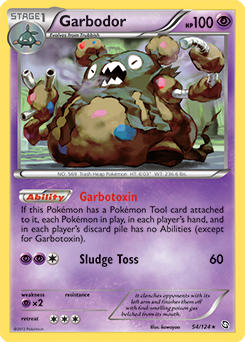
These are going to be the first major events of the season where the Standard format will be used. By this point we will also have a new set, BREAKthrough, to work with, meaning the format won’t be quite as limited as it is right now. If you have attended any Standard League Challenges or played the format online, you know exactly what I mean. The upcoming set will give us a few new toys to play with, along with reprints of key cards, including Float Stone and Super Rod to name a few.
As for what I’m going to talk about today, I’d like to give you guys a few tips to prepare for the upcoming City Championships, mostly relating to the Standard format, including taking a look at a few of the popular decks in Expanded and discussing how they perform in Standard. Then, I’d like to share a few thoughts I have about the new set, BREAKthrough, and the BREAK mechanic as a whole. But before all that, I’d like to take a moment to gloss over the past three weeks and note what impact the results could have on City Championships. There’s a lot to go over, so let’s get this started!
Regionals Recap
The widespread use of Expanded (as opposed to only using it for the second day like last season) has compelled players to do far more testing in the format. The sheer number of cards we have to work with is unprecedented, and allows for both creativity and variance in deck lists like never before. It is certainly true that mainstays like Yveltal-EX, Seismitoad-EX, Flareon, and Night March have appeared in droves during these events. What all of these archetypes have in common is that they are veterans in the game, but continue to pull their weight against newer threats like Giratina-EX, Archie’s Blastoise, and Tyrantrum-EX. What’s changed is not the core attackers of these decks, but rather their internal structures and support. Cards like Ghetsis and Archeops which have rotted in binders for ages are finally seeing competitive usage, and with so many different cards to work with, decks are more consistent than ever before. Using Jimmy O’Brien’s winning Flareon / Vespiquen list from Lancaster Regionals as an example, you can really see this in action. There are a whooping eight Pokemon that all use the exact same attack, and between Double Colorless Energy and Blacksmith, powering it up is an easy feat indeed. Virtually everything else in the deck exists to chuck cards into the discard as quickly as possible to fuel this Vengeance / Bee Revenge machine. Older Flareon builds needed to rely on other partners such as Leafeon and Raichu to ensure that you didn’t run out of attackers and that important matchups had coverage.
On the Pokemon-EX end of the spectrum, Yveltal-EX also saw a shift to a more Item-intensive build, incorporating cards such Battle Compressor, Trainers' Mail and Acro Bike to burn through the deck. This is inspired partially by the inclusion of Archeops, but even decks that don’t utilize this card benefit from easier access to Dark Patch. Coupled with higher counts of Darkrai-EX and Energy Switch, this makes turn one Evil Balls a real possibility once more.
Overall, I would sum up the results of the last few weeks as coming to both the surprise of many and the surprise of none at the same time. What does this mean? Well, the decks that performed well largely came from archetypes that had been accepted as strong performers by this point. The exceptions to this rule are Vileplume, a card that was expected to see play, as well as Tyrantrum-EX, another newcomer to the format, but one that brings with it a mighty attack and the ability to bypass any effects on its impressive 190 damage. Sableye / Bunnelby mill decks were perhaps the biggest surprise, as this was a strategy that players had written off as not competitive or simply didn’t know how to handle. As we saw with Wailord-EX and plenty of other decks over the years, surprise factor is certainly a legitimate means of success. Even if a deck like this only gets 15 minutes of fame, it’s still quite notable for being able to butt heads with the big boys.
Aside from these however, all of the decks that topped Regionals during all three weeks were the usual suspects — decks that were known to be consistent after many past successes, or were hyped going into the release of Ancient Origins. Archie’s Blastoise, Yveltal-EX, Seismitoad-EX, Giratina-EX, and Vespiquen, among others were all household names before Regionals began, so it came as no shock to see them doing well. Personally, I was only able to attend Lancaster Regionals, where I ran a Flareon / Vespiqueen deck very similar to Jimmy’s. With the exception of playing against Archeops once, my losses came from bad luck and dead draws more than anything else. I feel like I played to the best of my ability, but sometimes there are games you just aren’t meant to win. I ended up going 5-4, being literally just one N away from a top 64 spot, but my opponent in game three of the last round top decked a Professor Sycamore after I N’d him down to one card. Not much I can do about that, but I had a good time hanging out with friends regardless.
The Shift to Standard
With City Championships just over a month away, there is still plenty of time for players to test out the Standard format — something that many have been unable to do with Regionals taking priority. While some Cities will be Expanded, I expect that the same decks that performed well at Regionals will rack up Cities victories as well. BREAKthrough certainly does add a few new players, such as M Mewtwo-EX, but nothing that should make any of the existing archetypes obsolete.
Something to note about Standard is that many of the decks that saw play in Expanded still have their core attackers available in Standard. That said, with a card pool now limited to XY-On, some decks have lost key components to their success, which in turn open the door for other decks to improve matchups that were previously unfavorable. Let’s take a look at some of the winners and losers of this new format.
Winner: M Manectric-EX

Here’s a card that has adapted to practically every format shift that has appeared since its introduction, and has had consistent performances throughout the 2014-2015 season. M Manectric-EX has appeared alongside all sorts of partners, including Aromatisse, Virizion-EX / Genesect-EX, Seismitoad-EX, and recently Garbodor. While some of these have been lost to the rotation, the core strategy of Manectric remains unchanged, and with Turbo Bolt being such a useful attack, there will always be some great partners for this guy. Regice from Ancient Origins and Articuno from Roaring Skies are two great cards that can be easily powered up with a Turbo Bolt followed by a manual Energy attachment, and help to cover up some of Manectric’s shortcomings. Additionally, with Donphan and Landorus-EX gone, there are fewer Fighting decks to prey on the mighty Discharge Pokemon. This is one card that certainly won’t be going anywhere as players shift toward a Standard mindset.
Loser: Seismitoad-EX
Has the ubiquitous Quaking Punching menace lost its edge in Standard? It’s a little more complicated than that. Two key cards to Seismitoad’s damage output, Hypnotoxic Laser and Virbank City Gym, have left the Standard format, and without them, Quaking Punch is doing only 50 damage per turn… and that’s with a Muscle Band. It goes without saying that Item lock is a viable strategy, especially against non-EX decks that need a constant stream of draw power to get the resources they need. However, without the extra Poison damage and a chance at Sleep, players have more time to set up, even if they can’t play Items. With such a limited damage output, even a deck like Night March can eventually get rolling and start taking Prizes. I’ve heard from some players that Seismitoad-EX / Crobat will be viable, but without LaserBank, I don’t see how it will be taking down EX decks. I think Giratina-EX will continue to partner with Seismitoad for early game slowdown while it sets up a Chaos Wheel, but the deck will be far more focused on that than Quaking Punch.
Winner: Vileplume
With Seismitoad-EX losing a lot of its relevance, players are unfortunately still not able to run Item-intensive draw engines without taking a calculated risk. I think a lot of players are going to turn to Vileplume when Cities begins, at least until a reliable counter comes along. Being able to lock Items before your opponent has a chance to play any (if you go first) can make Vileplume even more dangerous than Seismitoad. Aegislash-EX, Miltank and Regice have already proven themselves to be great partners for Vileplume.
The downside is that Vileplume’s lock can be disabled with Hex Maniac, a card that many decks are now running multiple copies of, and it is liable to being stuck Active via Lysandre. Another issue is that if you go second, you may never be able to keep up with an opponent who has had a stellar first turn. M Manectric-EX decks have always fared well against Item lock strategies by shuffling between multiple M Manectric-EX and healing via Rough Seas. Vileplume isn’t much if an exception, especially if they can get their Manectric Spirit Links down early and evolve quickly. Regardless, Vileplume is still solid and is sure to give a lot of decks trouble. especially those of the non-EX variety. While it won’t pick up exactly where Seismitoad left off, it will definitely carve its own niche in the format.
Loser: Night March
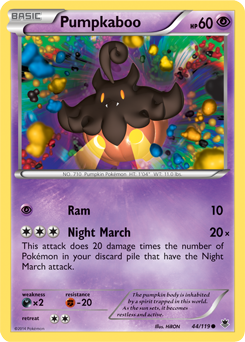
This has been the subject of some debate over the last few weeks, but I ultimately feel that Night March is going to run into some serious problems in Standard. Yes, Seismitoad-EX is limited to supporting and tech roles, but Night March itself has lost an important piece of its puzzle. Mew-EX was an amazing and versatile (literally!) card that greatly enhanced the deck’s consistency by being able to use Night March for a single basic Energy, letting you save those precious Double Colorless Energy for when you wanted / needed to attack with Joltik or Pumpkaboo. With Mew gone, these two are your only attacking options, and in order to power up a Night March in a single turn, you will need to use a Double Colorless Energy every time. With only four in the deck, not only do you need to play very conservatively, but this also means you could run out of steam against other non-EX decks. There are a handful of solutions, but they all require giving up one thing or another. The most efficient strategy that I’ve tested with uses Bronzong and Metal Energy in conjunction with Float Stone, which is being reprinted in the next set, to get Night Marchers going without DCE. This is cool, but recall that the most recent Night March lists have forgone Evolutions entirely, opting for maximum consistency with high counts of Trainers' Mail and Acro Bike. Fitting in a 2-2 or even a 1-1 Bronzong line does have an impact on consistency. With only 60 spots in your deck, most of which are already taken by your core Pokemon and draw engine, sacrifices will be made. Night March can certainly function in Standard, but playing it becomes a balancing act.
Winner: Vespiquen
It seems funny that I’d include Vespiquen as a winner right after declaring Night March as just the opposite. Both decks operate off Pokemon in the discard pile, and classically use Double Colorless Energy to fuel their attacks. So what’s the difference? The thing is that Vespiquen is a successor to the Flareon archetype that was well established before Ancient Origins. This is a deck that is already used to running multiple Evolution lines, and that isn’t going to change here. The Vaporeon, Jolteon, and Flareon from Ancient Origins open up some new doors, as you can exploit many weaknesses (and simply chuck away the ones you don’t need). Flareon is especially valuable, as by making your Vespiquen Fire type, you have access to Blacksmith for accelerating Energy without using DCE or Bronzong. And that’s the catch right there. It’s true that without Flareon from Plasma Freeze you no longer have access to eight attackers, but you can still get attackers back with Super Rod, being reprinted in BREAKthrough. The great thing about Super Rod is that it only recovers three Pokemon, and you can opt for basic Energy instead if you want to get less than that, as opposed to Sacred Ash forcing you to take five. This means that your Bee Revenge stays at maximum power while you get your resources back, and keeps your deck from getting clogged with cards you don’t need.
Loser: Crobat
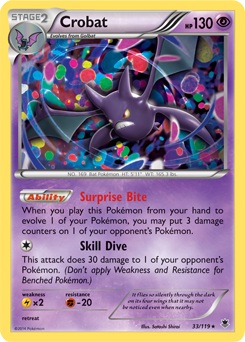
This is really more a collection of vastly different decks than a single archetype, but I’ve decided to clump them together as they all center around the famous Bats. Sneaky Bite and Surprise Bite are great Abilities, and Crobat has found so many partners by this point. The problem is the loss of Zubat from Plasma Storm, which was able to retreat for free thanks to its Free Flight Ability. In Standard, the only legal Zubat comes from Phantom Forces, and has a retreat of one. That’s a bigger deal than one might think, as if it gets stuck Active and you don’t have a Golbat to evolve into, you’ll need to attach an Energy or use up some sort of switching card, which you probably wanted to save for a better occasion. This makes starting with a lone Zubat problematic, and since most builds run four of them, it can happen a lot.
I’ve discussed how Seismitoad-EX / Bats has been weakened already, so I’ll move on to some of the other popular archetypes. Fighting / Bats also loses a key player, Landorus-EX. That 30 snipe damage really sealed the game against decks like Night March when coupled with Bat damage. With this amazing card (one of my personal favorites) gone, Lucario-EX and Hawlucha are left as the workhorses of the deck. While they are both fine attackers, they will run into issues without the mighty Landorus at their side. Hawlucha can only attack Pokemon-EX, making it useless against non-EX decks except as a Shaymin-EX killer. Lucario is also a great card with three solid attacks, but because Corkscrew Smash, the attack you are likely to use the most, requires two Energy, you can’t simply use Super Scoop Up to heal it. In addition, being weak to Psychic and being limited to Bats for Bench damage, Night March quickly turns from practically an auto-win into something that’s certainly not favorable, not to mention the hype surrounding Mewtwo in the next set. Sure, M Mewtwo-EX Y doesn’t apply Weakness, but both basic Mewtwo in BREAKthrough do!
Finally, we have Raichu / Bats, which seems to lose the least in Standard. Using Bats to snipe non-EX Pokemon on the Bench while doing up to 180 to the Active, or using Bats on the Active to KO a Mega Evolution with ease is still a very real thing. Since this is a deck that needs to evolve, and as such can’t attack on the first turn anyway (if going second), opening with a lone Zubat is less of an issue, as you can simply evolve into a Golbat with free retreat on turn two, and get right down to business.
Winner: Yveltal

It might seem strange for me to count this deck as a winner. After all, two important support Pokemon, Darkrai-EX and Keldeo-EX, have both left for greener pastures. In addition, Hypnotoxic Laser and Virbank City Gym have also rotated as I mentioned previously. That’s a tragedy to some (and a reason to celebrate for others), but the core attacker, Yveltal-EX, is still there, and can make itself the centerpiece of a different sort of deck. Defensive Yveltal-EX builds utilizing Shadow Circle and Hard Charm are really nothing new, having seen the most play during Cities last year when Donphan was all the rage. This sort of deck could certainly come back. In addition, Dark decks gain a new partner in the form of Zoroark from BREAKthrough. This card’s Ability is an exact reprint of Keldeo-EX’s Rush in, and while it is on a Stage 1, the Pokemon is a solid attacker in its own right. For a Double Colorless Energy, its Mind Jack attack does 10 damage plus an additional 30 for each Pokemon on your opponent’s Bench. That adds up pretty quickly. If your opponent’s Bench is full, that’s 160 damage from a non-EX for just a DCE. Put on a Muscle Band and you hit the magic 180. Or you can place a Float Stone on your Zoroark and use it as a means of free retreat. With both a great Ability and a powerful attack, this is a versatile card indeed. Fellow writers Grant Manley and Steve Guthrie have already given their two cents about this card, and I agree with them. As far as Zoroark BREAK goes, it certainly has potential, and if support for BREAK Evolution comes in future sets it could see play here. I’ll voice my thoughts on BREAK Evolution later in this article, but as of right now I think the Stage 1 is what you’re going to see. Running Stage 1 Pokemon in Yveltal is nothing new, so this isn’t a huge surprise.
Setting the Standards
I apologize for the puns. I promise there will be more. Unlike the last couple of rotations, Standard really is a journey into uncharted waters, with all of the Black & White era cards, barring a handful of reprints, removed from the format. It’s exciting, but also a bit scary. Many players, myself included, have become so accustomed to mainstays like N, Colress, Computer Search, and plenty of other cards that it’s hard to imagine a format where they no longer exist.
I don’t believe we will continue to have a vanilla list of draw cards that nearly every deck runs in similar counts from this point forward. Sure, Professor Sycamore will warrant a playset in every deck, but cards like Professor Birch's Observations and Teammates are more limited to decks that need their effects or can take advantages of them where others can’t. This might include non-EX decks like Night March and the much-hyped Dugtrio, which require a steady stream of resources, and could benefit from extra draw power, whether it comes from Supporters, Pokemon, or someplace else. Conversely, bulkier decks like M Manectric-EX don’t require a great deal of digging for resources beyond the initial setup phase. Pokemon-EX decks typically run less fragile attackers, therefore have more space to include non-draw Supporters such as Hex Maniac, or cards like Enhanced Hammer to disrupt their opponents. While this has always been the case, with a lot of the commonly shared cards from Black & White leaving the format, there will be a lot more branching off and differences between lists, even those of the same archetype.
As far as City Championships go, I think the first weekend of Cities is going to be very open, in spite of the limited card pool available. So far we have had only League Challenge results in Standard, and while those are helpful, the data isn’t always reliable. League Challenges, depending on timing, attendance, and location can range from highly competitive to strictly casual players, and often serve as testing grounds more than serious events due to the minimal amount of Championship Points at stake. It’s pretty common for a “random” deck to perform well at and possibly win a League Challenge simply because the event wasn’t competitive, or one or more opponents dead drew in a single-game match. A known deck is just as likely to win for many of the same reasons. I always feel that LCs are more luck-based than any other type of tournament, and it’s best to run a consistent deck that’s not prone to drawing dead or being too fragile. Because of all these factors, League Challenge records often don’t make the best references.
That said, the first weekend of Cities will likely make or break many of the archetypes that players have been discussing and testing. While Cities aren’t quite as competitive as higher level events, they still attract plenty of competitive players due to the Championship Points at stake. Having a top cut also makes it less luck-based, as a single loss in Swiss rounds isn’t going to ruin your chance of winning the crown. The decks that do well during the first weekend of Cities, will have a tremendous impact on what shape the Standard format will take through improvements and counters. This isn’t new logic, but it is the first time in a while that there has been such a drastic difference in the card pool post-rotation.
Practice, Practice, Practice!
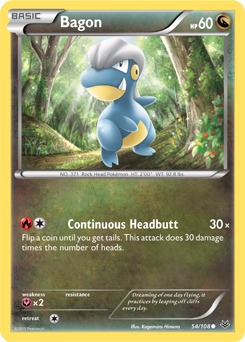
I can’t stress this enough. This is a new format for all of us and there’s a lot we can do to get our game on even with City Championships being weeks away. Now is the time to build decks and test as many matchups as you can. Over the Pokemon TCG’s history there have been plenty of cards that were hyped when they were first shown, but failed to place in any major events. The best time to discover which combinations work and which ones don’t is long before you show up to a tournament. I encourage you to test with as many decks as you can and see what feels the most comfortable to you. Some players, including myself, prefer aggressive strategies. Others are more drawn to lock decks. Or perhaps you like mill decks. There’s certainly some room for those while players are still testing the water. Times like this, when the core decks of a format aren’t yet set in stone, are when novel strategies are most likely to flourish.
Even though BREAKthrough won’t be released until November 4th, and won’t be legal for three weeks after that, the current Standard format is still worth playing in. I’ve heard rumors that there will be City Championships the weekend before Thanksgiving in some areas, meaning BREAKthrough will not be legal for them. If any of these Cities are in your area, you should do some testing without BREAKthrough in mind. However, concerning the new set, it would be wise to test out some of the new cards before they become legal for sanctioned play, with cards from Prereleases, proxies, etc. Play around with different decks and see what works. Once you find something you really like, keep practicing it and test against as many matchups as you can so that by the time Cities rolls around, you won’t run into too many surprises.
I also suggest testing against people outside just your normal League or testing circle. Two players can play the same deck with wildly different strategies, and by facing many people, you open your mind to more than just the mundane. Online testing is great for this, though it does have its limits. BREAKthrough will go live on Pokemon TCG Online on November 4th, the same day that it will be released at retail.
My Thoughts on BREAK Evolution
As most of you are already aware, the upcoming set introduces a new mechanic called BREAK Evolution. This bears some similarity to the LV.X mechanic from the Platinum era, but differs in that BREAK is part of the Pokemon’s name, and as such doesn’t limit you to splitting between them and the non-BREAK Pokemon they evolve from. BREAK Evolutions are upgrades to Stage 1 and 2 Pokemon. Aside from being a new type of Evolution, they follow the same rules as Stage 1 and Stage 2 Pokemon in that a Pokemon that has been played this turn must wait until your next turn to BREAK Evolve, unless you have an effect like Wally that gets around this. Unlike other Evolutions, and like LV.X cards, a BREAK Evolution retains the attacks, Ability (if any), Weakness, Resistance, and Retreat Cost of the Pokemon that it evolves from, but gains more HP and additional attacks and / or Abilities. As of the current set, all BREAK Evolutions are non-EX, and this will almost certainly be the trend as this mechanic continues to appear in future sets. Finally, a ruling was made that a BREAK Evolution cannot be put into play via Archie's Ace in the Hole or Maxie's Hidden Ball Trick, as they are not complete Pokemon.
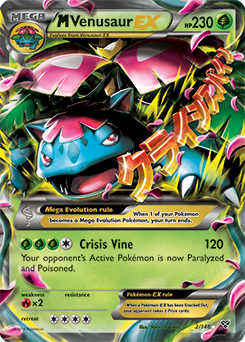
I’m largely unimpressed by the BREAK cards that will be released in the upcoming set, with a couple of exceptions. I like Zoroark BREAK because it evolves from a card that is solid in its own right, and for a single Darkness Energy can use its Foul Play attack to copy one of your opponent’s Active Pokemon’s attacks. There’s certainly some potential there, but even if every single Pokemon BREAK featured in BREAKthrough had powerful attacks or useful Abilities, they just take too long to get out. There’s no way to skip a stage when you BREAK Evolve. You still need to wait a turn after evolving into your Stage 1 or 2 before your Break Evolve. It’s just not worth it in my opinion.
However, I think it’s far too early to ride BREAK Evolution off as something that’s totally unplayable. Recall that when Mega Evolutions were first introduced back in XY they were pretty bad. The fact that they ended your turn as soon as you Mega Evolved was bad enough, and to make matters worse, the first Mega Evolutions were very Energy hungry and weren’t strong enough, or had too many drawbacks to make playing them worthwhile. M Kangaskhan-EX was an exception, as it had a niche role in Aromatisse decks as something that was nearly impossible to OHKO, at least at the time.
The change came with the release of Phantom Forces, which marked the debut of M Manectric-EX. With a reasonable and useful attack, along with the Manectric Spirit Link that allowed you to Mega Evolve without ending your turn, this was the first Mega Evolution to see widespread competitive usage. Primal Clash continued with this trend, giving Spirit Links to its keystone Pokemon, and this has been the case since, with the exception of a handful of promotional cards. Similarly, I predict that future sets will offer more support for BREAK Evolution. I’m not sure exactly what flavor this will come in, but surely we should see something that will help players get Pokemon BREAK out faster and more efficiently. Sadly, until then, I don’t think any of these cards, as creative as some of them may be, will be making their way to top tables.
Conclusion
Standard events are something that many players are looking forward too, especially those who have grown weary of falling prey to Hypnotoxic Laser, as well as newer players who might have trouble getting their hands on older cards. I am also curious to see how the two formats are going to interact as we progress through Cities. My biggest question is if the results in Expanded Cities will have any bearing on Standard events, and vise versa. This is the first time that two drastically different formats have been used during the same season, and in our case, possibly the same weekend. Honestly, as nervous as I am, I am more than just a little excited for being a part of this unprecedented City Championship series, and I’m looking forward to this more than I have in any other year. I’m looking forward to hearing for all of your about your Cities adventures!
Once again, I hope you enjoyed reading this article as much as I did writing it! Make sure to leave a comment about what you thought of the article. Until next time, may your top decks ever be in your favor!

